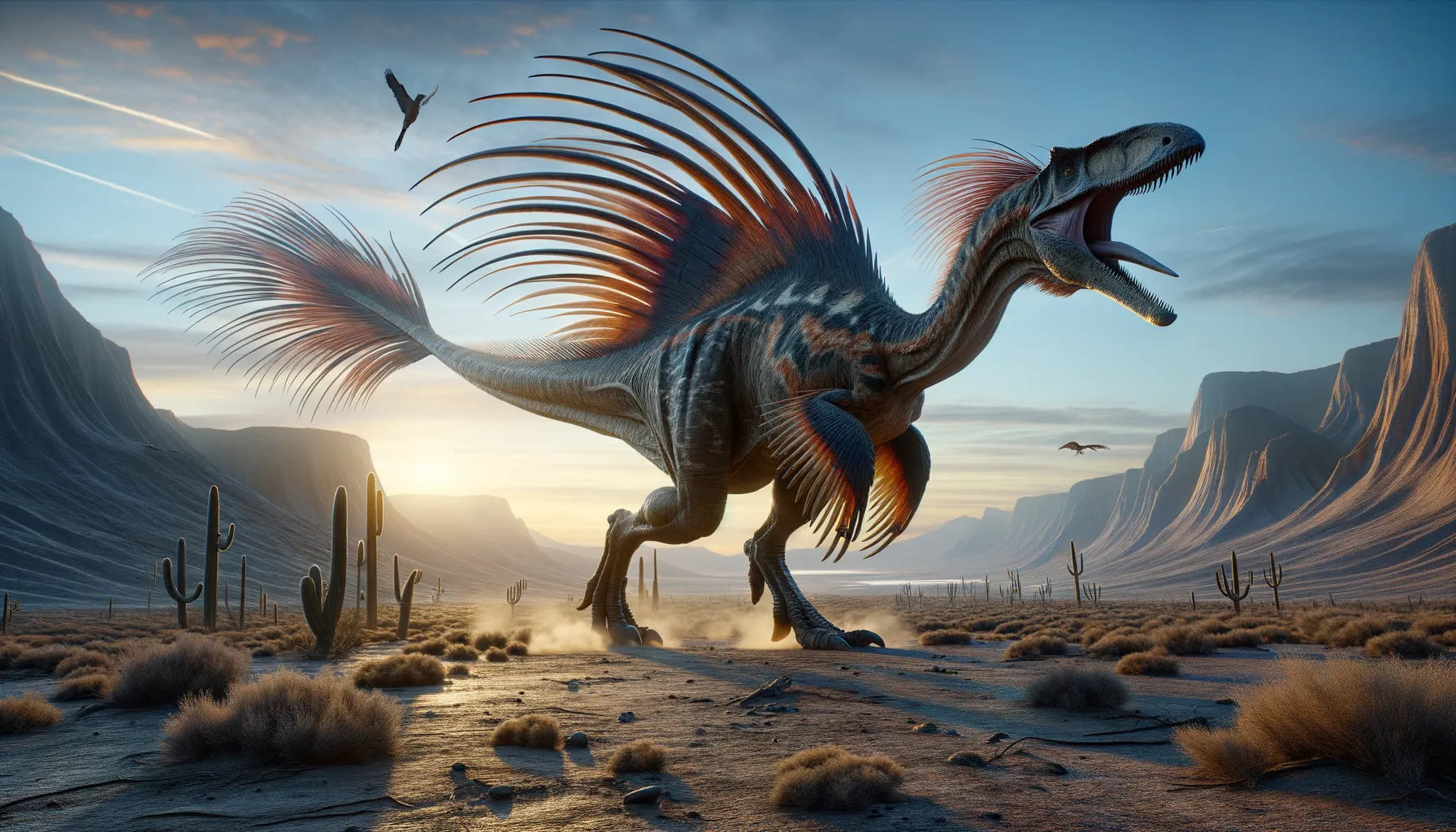
Unenlagia
Bird-like and agile, a swift predator!
Period
Cretaceous
Length
Around 2.5 meters long.
Height
About 1.5 meters tall.
Weight
Approximately 70 kilograms.
Unenlagia was a bird-like dinosaur that lived during the Cretaceous period in what is now South America. Known for its unique anatomical features that hint at a close relation to modern birds, it was a swift predator. The discovery of Unenlagia has provided valuable insights into the evolutionary transition from dinosaurs to birds. Its fossils have helped paleontologists better understand the diversity of dinosaurs in the southern hemisphere.
Diet
Unenlagia was likely a carnivore, feeding on small vertebrates and possibly insects. Its diet would have depended on the availability of prey in its ecosystem.
Hunting
It probably hunted using its agility and speed, ambushing or quickly pursuing small prey. Its keen senses helped it locate prey in its environment.
Environmental challenges
Unenlagia faced challenges such as finding food and avoiding predators. Climate fluctuations could have affected its habitat, impacting food availability. Competition with other dinosaurs for resources would have also presented challenges.
Speed
Likely agile with moderate speed.
Lifespan
Estimated to live up to 20 years.
First discovery
Discovered in Argentina in 1997.
Fun Facts
- Unenlagia was a dinosaur that lived approximately 90 million years ago during the Late Cretaceous period.
- The name Unenlagia means 'half-bird,' as it showcases a mix of dinosaur and bird-like features.
- It is believed to have been a swift, bipedal predator, possibly capable of using its arms for balance while running.
- Unenlagia was discovered in Argentina, showcasing the rich and diverse dinosaur life present in South America during the Cretaceous.
- Fossil evidence suggests that although Unenlagia had some bird-like characteristics, it didn't have the ability to fly.
- Unenlagia's discovery plays a crucial role in understanding the evolutionary transition from dinosaurs to birds.
- It was part of the dromaeosaurid family, closely related to Velociraptor, known for their agility and intelligence.
Growth and Development
Unenlagia likely grew rapidly from a juvenile to an adult to minimize its vulnerability to predators. Its development stages might have included periods of slower growth during resource-scarce times. Like many dinosaurs, it probably achieved full size in just a few years.
Habitat
It thrived in regions that were warmer and more humid than today’s environments. Forested areas with dense underbrush provided ample cover for hunting. Rivers and lakes would have been essential for hydration and attracting prey.
Interaction with other species
Unenlagia coexisted with various other dinosaur species, which could have led to competition for resources. It may have also faced predators larger than itself, forcing it to adapt strategies for survival. Interactions might have involved direct combat or avoiding confrontations altogether.
Natural lifespan
Naturally, it might have lived up to two decades.
Reproduction
Unenlagia likely laid eggs, as most dinosaurs did. Nesting in protected areas would have increased the survival chances of its offspring. Parental care might have been minimal, with juveniles expected to quickly fend for themselves.
Social behaviour
Unenlagia could have exhibited solitary behavior, focused mainly on individual survival. During the breeding season, it might have engaged in social interaction for mating purposes. Some social learning could have occurred among juveniles in small groups.
Fossil locations
Unenlagia fossils have been primarily discovered in the Patagonia region of Argentina. The initial find in 1997 was significant in filling gaps in the dinosaur-bird evolutionary timeline. These locations have provided a wealth of information on dinosaur diversity.
